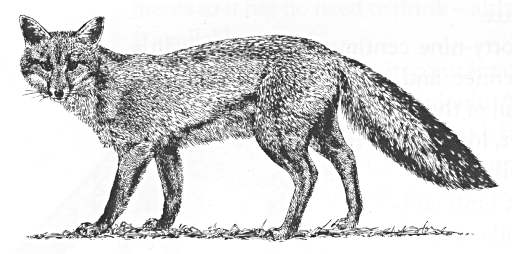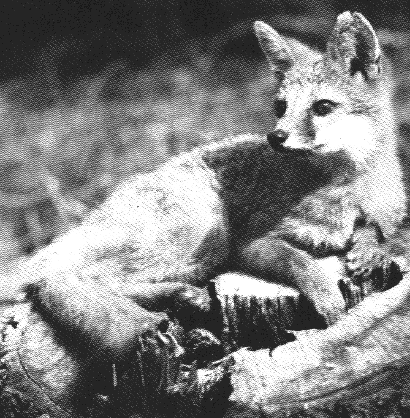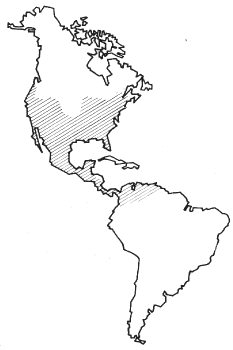


English Name:
-Gray-Fox
Deutscher Name
-Graufuchs
Group
-
Lathin Name:
-Urocyon cinereoargenteus
-Urocyon cinereoargenteus borealis
-Urocyon cinereoargenteus cinereoar
-Urocyon cinereoargenteus costaricen
-Urocyon cinereoargenteus floridanus
-Urocyon cinereoargenteus nigrirost
-Urocyon cinereoargenteus scottii
appearance:
-shape und size foxlike, longer legs .back gray with a black stripe
to the tailend. throat-sides, flanks, legs redish-yellow, downside white, rusty-red along the sides.
-The tail usually has a black mane along the top, with a dark-gray or black tip.
-noticeable coloring; silver-gray and reddish-yellow shades predominate
-Cubs are clad in a dark coat.
-32 to 45 inches long, weighs 7 to 11 pounds.
Geographic Range:
-2 kinds. America from South-kanada across Middle-america to northern
South-america including Isles of Southkalifornia (Santa-Barbara-Isles).
-range from southern Canada to northern South America, and they reached
Colombia and venezuela in recent geologic times.
-Southern representatives are markedly smaller than their northern counterparts
- ranges in all but extreme northwest of state Utah;

Habitat:
-all teritories with bushes and trees in their spreeding area from rocky
arid areas to the virgin forest. live solitary . sleep- und birthplaces
in tree-holes, rock-clefts, earth-holes or in dense underwood, climb trees,
can climb well.
-habitat varies greatly and includes arid regions, bush-covered steppes,
sparsely wooded areas, and mountainous forests. GRay foxes can live in
a wide variety of terrain from arid zones to jungles. They prepare their
lairs in crevices in rocks, hollow trees, and caverns. They do very little
digging themselves.
-prefers open forests and rimrock country; abundant in Fruita.
Behaviour:
Activity: twilight- and nightactive
- Slightly known aout habitat, because very shy, yet frequently seen in
city parks.
-Gray foxes live in pairs
-Parents remain together throughout the year.
-In the Summer, the young animals and their parents form familial packs,
which break up in the Fall.
-during the day they hide in dense brush.
-They are shy and flee immediately when hreatened, sometimes by climbing
trees as they also do under other circumstances.
-These animals are easily tamed, and they are often kept as pets in North
America.
-Unfortunately they suffer severe persecution.
Reproduction
- Mating: Feb.-Apr.(Feb. to Mar.)
- birth after: 51-64 weeks (about two month)
- birth-time: Apr.-May
- litter size: 1-7 (normal: 4)
- weaned after:
- grown up in:
- Cubs take solid food at the age of six weeks
Food Habits:
- much vegetable foodstuff (Fruits, Beeries) as well as small animals,
exspecially rodents, birds, Lizards and Insects.
-omnivorous and consume more vegetation than other canids. Depending upon
the season and their distribution, their diet consists of fruit, grain,
invertebrates of all kinds (especially insects), pocket mice, mice and
occasionally birds.
Specialities :
-rarely shown in Zoos
-tree-climbing ability
others :
-Populations on islands off the southern California coast were described
as a separate species, (Urocyon littoralis,) but there is no justification
for doing so.
-keeping: String roofed outside cages, since animals climb well.
Cubs brownish-black, about 100g raising often succeeded, young animals
are very tame.
Links
Gray Fox: Texas Zoo: great photo!
Urocyon cinereoargenteus - The University of Michigan - Museum of Zoology - Animal Diversity Web.